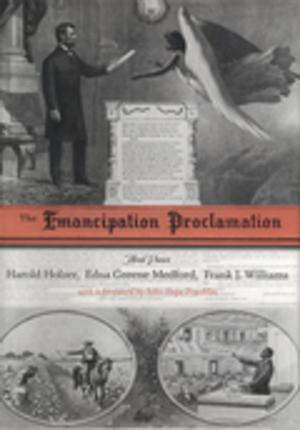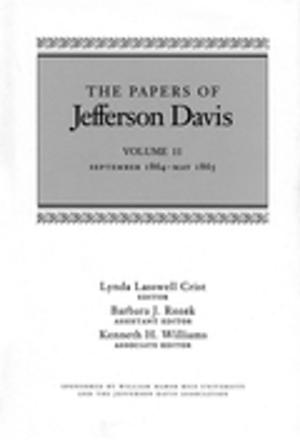Murder in the Métro
Laetitia Toureaux and the Cagoule in 1930s France
Nonfiction, History, Western Europe, France, Modern, 20th Century| Author: | Gayle K. Brunelle, Annette Finley-Croswhite | ISBN: | 9780807146651 |
| Publisher: | LSU Press | Publication: | May 1, 2010 |
| Imprint: | LSU Press | Language: | English |
| Author: | Gayle K. Brunelle, Annette Finley-Croswhite |
| ISBN: | 9780807146651 |
| Publisher: | LSU Press |
| Publication: | May 1, 2010 |
| Imprint: | LSU Press |
| Language: | English |
On the evening of May 16, 1937, the train doors opened at the Porte Dorée station in the Paris Métro to reveal a dying woman slumped by a window, an eight-inch stiletto buried to its hilt in her neck. No one witnessed the crime, and the killer left behind little forensic evidence. This first-ever murder in the Paris Métro dominated the headlines for weeks during the summer of 1937, as journalists and the police slowly uncovered the shocking truth about the victim: a twenty-nine-year-old Italian immigrant, the beautiful and elusive Laetitia Toureaux. Toureaux toiled each day in a factory, but spent her nights working as a spy in the seamy Parisian underworld. Just as the dangerous spy Mata Hari fascinated Parisians of an earlier generation, the mystery of Toureaux's murder held the French public spellbound in pre-war Paris, as the police tried and failed to identify her assassin.
In Murder in the Métro, Gayle K. Brunelle and Annette Finley-Croswhite unravel Toureaux's complicated and mysterious life, assessing her complex identity within the larger political context of the time. They follow the trail of Toureaux's murder investigation to the Comité Secret d'Action Révolutionnaire, a secret right-wing political organization popularly known as the Cagoule, or "hooded ones." Obsessed with the Communist threat they perceived in the growing power of labor unions and the French left wing, the Cagoule's leaders aimed to overthrow France's Third Republic and install an authoritarian regime allied with Italy. With Mussolini as their ally and Italian fascism as their model, they did not shrink from committing violent crimes and fomenting terror to accomplish their goal. In 1936, Toureaux -- at the behest of the French police -- infiltrated this dangerous group of terrorists and seduced one of its leaders, Gabriel Jeantet, to gain more information. This operation, the authors show, eventually cost Toureaux her life. The tale of Laetitia Toureaux epitomizes the turbulence of 1930s France, as the country prepared for a war most people dreaded but assumed would come. This period, therefore, generated great anxiety but also offered new opportunities -- and risks -- to Toureaux as she embraced the identity of a "modern" woman. The authors unravel her murder as they detail her story and that of the Cagoule, within the popular culture and conflicted politics of 1930s France.
By examining documents related to Toureaux's murder -- documents the French government has sealed from public view until 2038 -- Brunelle and Finley-Croswhite link Toureaux's death not only to the Cagoule but also to the Italian secret service, for whom she acted as an informant. Their research provides likely answers to the question of the identity of Toureaux's murderer and offers a fascinating look at the dark and dangerous streets of pre--World War II Paris.
On the evening of May 16, 1937, the train doors opened at the Porte Dorée station in the Paris Métro to reveal a dying woman slumped by a window, an eight-inch stiletto buried to its hilt in her neck. No one witnessed the crime, and the killer left behind little forensic evidence. This first-ever murder in the Paris Métro dominated the headlines for weeks during the summer of 1937, as journalists and the police slowly uncovered the shocking truth about the victim: a twenty-nine-year-old Italian immigrant, the beautiful and elusive Laetitia Toureaux. Toureaux toiled each day in a factory, but spent her nights working as a spy in the seamy Parisian underworld. Just as the dangerous spy Mata Hari fascinated Parisians of an earlier generation, the mystery of Toureaux's murder held the French public spellbound in pre-war Paris, as the police tried and failed to identify her assassin.
In Murder in the Métro, Gayle K. Brunelle and Annette Finley-Croswhite unravel Toureaux's complicated and mysterious life, assessing her complex identity within the larger political context of the time. They follow the trail of Toureaux's murder investigation to the Comité Secret d'Action Révolutionnaire, a secret right-wing political organization popularly known as the Cagoule, or "hooded ones." Obsessed with the Communist threat they perceived in the growing power of labor unions and the French left wing, the Cagoule's leaders aimed to overthrow France's Third Republic and install an authoritarian regime allied with Italy. With Mussolini as their ally and Italian fascism as their model, they did not shrink from committing violent crimes and fomenting terror to accomplish their goal. In 1936, Toureaux -- at the behest of the French police -- infiltrated this dangerous group of terrorists and seduced one of its leaders, Gabriel Jeantet, to gain more information. This operation, the authors show, eventually cost Toureaux her life. The tale of Laetitia Toureaux epitomizes the turbulence of 1930s France, as the country prepared for a war most people dreaded but assumed would come. This period, therefore, generated great anxiety but also offered new opportunities -- and risks -- to Toureaux as she embraced the identity of a "modern" woman. The authors unravel her murder as they detail her story and that of the Cagoule, within the popular culture and conflicted politics of 1930s France.
By examining documents related to Toureaux's murder -- documents the French government has sealed from public view until 2038 -- Brunelle and Finley-Croswhite link Toureaux's death not only to the Cagoule but also to the Italian secret service, for whom she acted as an informant. Their research provides likely answers to the question of the identity of Toureaux's murderer and offers a fascinating look at the dark and dangerous streets of pre--World War II Paris.















